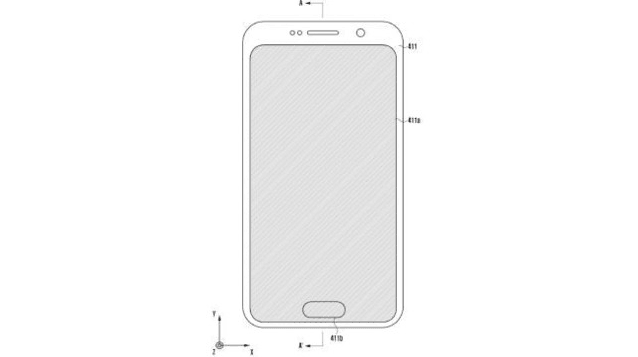Samsung hasn’t even announced the Galaxy S9 yet, but Note fans are eagerly waiting for the Galaxy Note 9. KGI Securities analyst Ming-Chi Kuo has told investors many times that Samsung would add an optical fingerprint reader to the Galaxy Note 9. In the last few months, the Korean company has been awarded many patents related to the in-display fingerprint sensor technology. A patent Samsung recently filed with the World Intellectual Property Office (WIPO) shows how the optical fingerprint reader on the Galaxy Note 9 would work.
There have been widespread speculations for more than a year that Samsung was working to bring the in-display fingerprint scanning technology to its flagship smartphones. The company’s facial recognition technology isn’t that secure, and location of the fingerprint sensor on existing models isn’t most convenient. An in-display fingerprint reader could allow users to unlock the device by placing their finger on the screen.
Samsung was initially expected to introduce the feature with the Galaxy S8, but it never happened due to technical and security issues. The company was still facing implementation issues with the optical fingerprint reader when the Galaxy Note 8 came out. It is yet to fully resolve the production bottlenecks, so the feature won’t appear in the Galaxy S9 that will be unveiled later this month. We will finally get to see the feature in the Note 9.
The patent documents suggest that the fingerprint reader will be integrated near the bottom of the screen. You have to place your finger on the designated area to unlock the device and authenticate payments. It will give a sense of vibration when it fails to authenticate the user. The fingerprint scanner has Samsung’s familiar elliptical shape. It’s worth pointing out that the phone shown in patent documents is just for reference. It’s not the design of Galaxy Note 9 or any other Samsung flagship.
Samsung could easily have sourced the in-display fingerprint sensors from suppliers like Synaptics, which has already started mass production of its Clear ID FS9500 optical fingerprint scanner. Synaptics claims the Clear ID FS9500 is far more secure than alternative biometrics including Face ID on the iPhone X. Chinese smartphone vendor Vivo recently announced the Vivo X20 Plus UD that features the Clear ID FS9500 sensor. Many more smartphone vendors could use Synaptics’ sensor in the near future.
However, the Korean company is keen to develop its own optical fingerprint reader rather than relying on third-party solutions. Over the last few years, Samsung has been trying to use more and more in-house technologies in its products. Of course, it could lead to a significant spike in R&D costs, but Samsung could save tons of money in the long run. It could keep improving its fingerprint reader technology and add it to more of its smartphones. That way, it won’t have to pay exorbitant royalty fees to other vendors.
The Galaxy Note 9 will likely look similar to the upcoming Galaxy S9 Plus. It would also have the same Snapdragon 845 or Exynos 9810 chipset depending on the region. However, it will come with an improved S Pen stylus and tons of features supported by the stylus. A patent recently filed by Samsung indicates that the upcoming S Pen would work with your finger to enhance user experience. Things that can easily be performed with your finger, such as erasing text on the screen, will be assigned to your finger. The S Pen will take care of other responsibilities.
Another patent filed by Samsung shows that the Korean electronics behemoth has found a solution to Apple’s notch problem. And this technology could find its way into the Galaxy Note 9. Smartphone vendors including Apple haven’t yet figured how to integrate components such as the front camera, ear speaker, iris scanner, and other sensors under the display screen to offer a completely bezel-less design. That’s why the iPhone X sports the weird notch near the top of the screen.
According to Samsung’s patent documents, the company could create tiny holes in the screen for the front camera, earpiece, iris scanner and other sensors. The holes will allow these sensors to perform as intended without hurting the user experience. Samsung is expected to unveil the Galaxy Note 9 in August and bring it to the market a few weeks later. The phablet is expected to retain the Bixby button, USB-C port, and the 3.5mm headphone jack.
Reports from Korean media suggest that the Galaxy Note 9 would feature machine learning chips to support advanced AI features. Samsung’s AI chips have already reached the technological levels of Apple and Huawei. Samsung is joining the AI race a bit later than its rivals, but it is trying to catch up fast.





